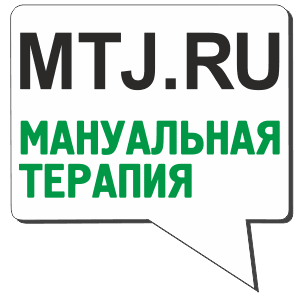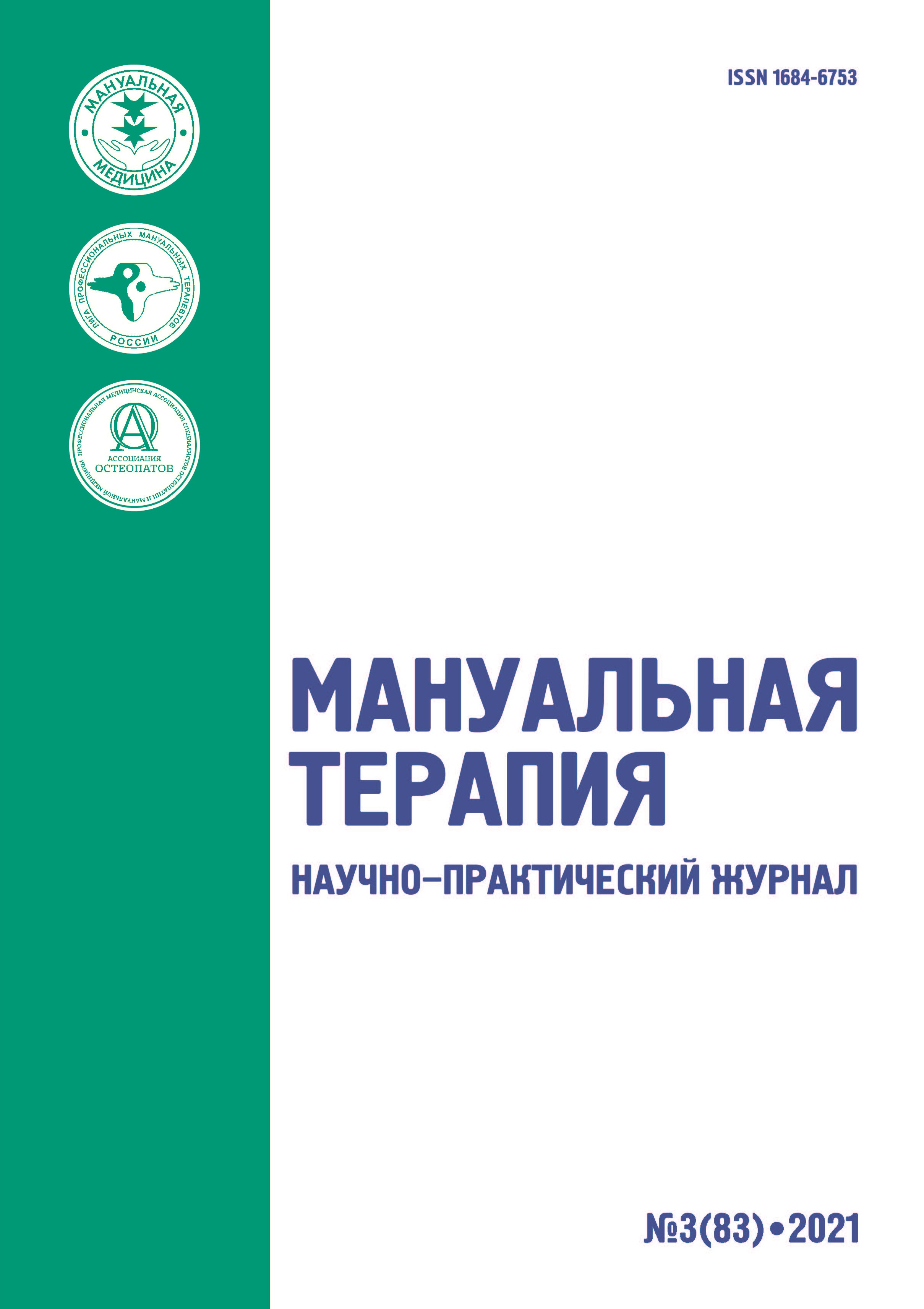Russian Federation
The eff ectiveness of simultaneous use of braces and methods of osteopathic correction was evaluated while treating 48 patients suff ering from occlusion disorders at the dental alveolar level. The indicators of osteopathic status, situational anxiety, and satisfaction with the aesthetic result of treatment were studied. It was found that the most typical somatic dysfunctions were the dysfunctions of the bones of the skull base, facial skull, cervical spine, chest, and of internal organs of the chest and neck. The inclusion of methods of osteopathic correction in the comprehensive treatment resulted in the better mobility of the structures of the skull, cervical spine, and chest, a decreased anxiety level and, consequently, an increased satisfaction with the aesthetic result of treatment.
osteopathic treatment, disturbed occlusion, braces, retainer
1. Andrianov VL, Bespala NI, Tsimbalistov AV, et al. The condition of the temporomandibular joint in persons with the spine diseases. Collection of scientifi c articles: Osteopathy No.1. St.-Petersburg: “Peterburgskii Institut Pechati” Publishing House; 2004:51-58. (In Russ.).
2. Egorova IA, Mikhailova ES. Cranial osteopathy: Guidelines for doctors. 2nd edition, revised. St.-Petersburg: “SPbMAPO” Publishing House; 2013. 500 p. (In Russ.).
3. Egorova IA. A collection of lectures on cranial osteopathy. St.-Petersburg: “SPbMAPO” Publishing House; 2007. 152 p. (In Russ.).
4. Persin L.S. Orthodontics. Diagnostics and therapy of dental and jaw anomalies. Guidelines for doctors. Moscow: JSC “Meditsina” Publishing House”; 2004. 360 p. (In Russ.).
5. Persin LS, Elizarova VM, Dyakova SV. Dentistry of children’s age. 5th edition, revised. Moscow: Meditsina; 2003. 640 p. (In Russ.).
6. Karton EA, Lendengolts ZhA, Persin LS. Retention and recurrences. Moscow: MGMSU of Roszdrav; 2006. 46 p. (In Russ.).
7. Petrosyan LB, Chervotok AE, Gutorov AYu. A common vision of diagnostics and therapy in neurology, dentistry, otolaryngology, and ophthalmology. A functional skull. Proceedings of International Symposium “Scientifi c and clinical aspects of the application of osteopathy in the cranial region”, St-Petersburg. 2009;168-269. (In Russ.).
8. Okeson JP. The management of temporomandibular disorders and occlusion, 5th edition. Mosby, 2003. 685 p.
9. Okeson JP, de Leeuw R. Diff erential diagnosis of temporomandibular disorders and other orofacial pain disorders. Dent clin north am. 2011;55(1):105-120.
10. Schwartz LL. Disorders of the temporomandibular joint. J am dent assoc. 1955;51(10):39-43. 11. Slavicek R. The Masticatory Organ: Functions and Dysfunctions. Klosterneuburg: Gamma Med.-viss. Fortbildung-AG, 2008. 544 p.
11. Slavicek R. The Masticatory Organ: Functions and Dysfunctions. Klosterneuburg: Gamma Med.-viss. Fortbildung-AG, 2008. - 544 p.
12. Slavicek R. Relationship between occlusion and temporomandibular disorders: Implications for the gnathologist. Am J orthod.dentofacial orthop. 2011;139(1):10-14.








